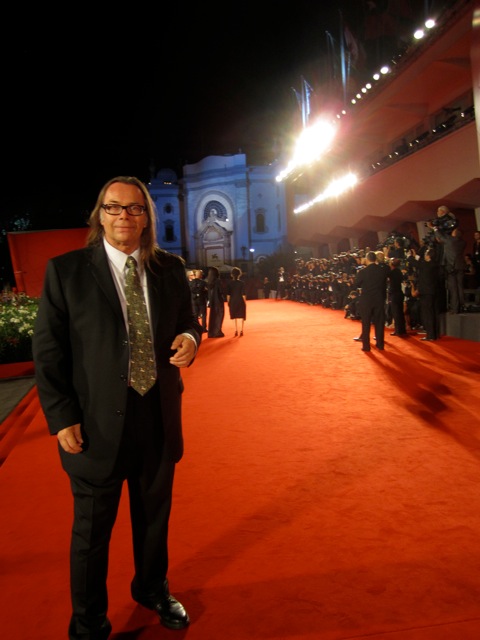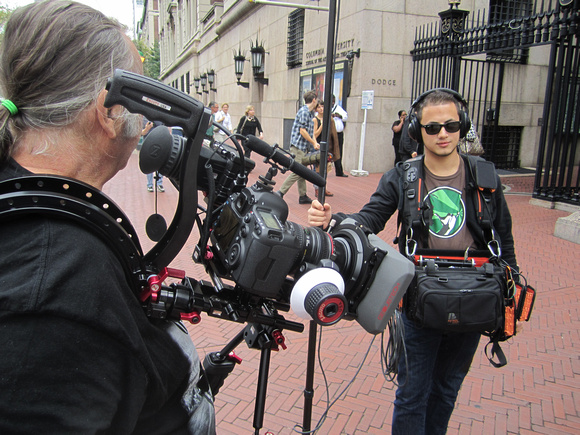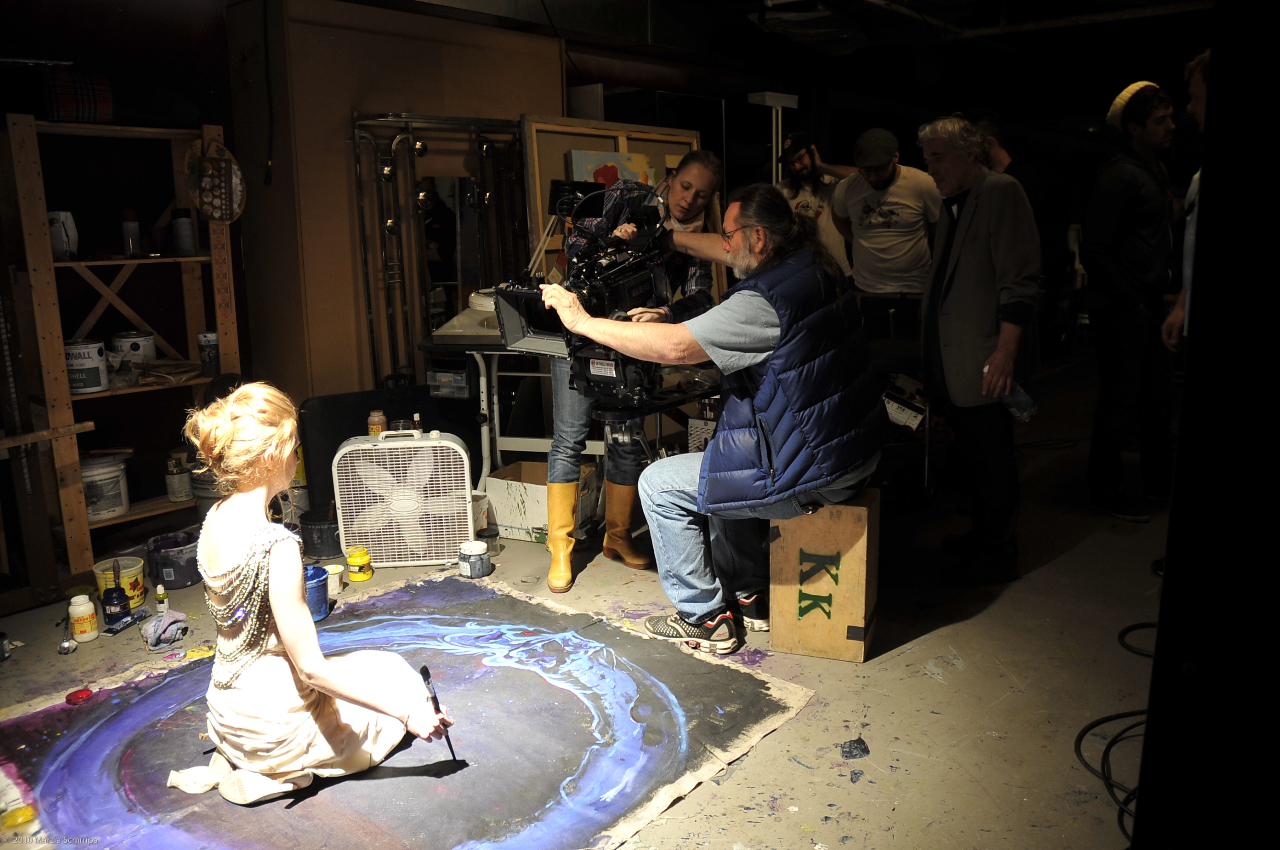The Life and Strife of a Cinematographer
If you were to look up the word ‘cinematography’ in the dictionary, the definition would read, “the art of making motion pictures.” That is the essence of the word, but it doesn’t elaborate on any of the subtleties or responsibilities of the art. Don’t worry, Ferro is here to provide insight. And who better than Ken Kelsch, an award-winning cinematographer, to go beyond the textbook meaning for us.
Ken Kelsch has over 40 years of experience in the film and television industries. He has worked as a cinematographer on 49 film projects, including 31 feature length films. His most notable works include films Bad Lieutenant and Desert Flower as well as the NBC T.V. series Medium. Mr. Kelsch perhaps has one of the more improbable rises to success. It began when he was just a child, growing up in a family that was barely making ends meet. He then went off for a tour in Vietnam to serve as a Green Beret, only to come home and work full-time at Permacel (an industrial adhesive tape manufacturing company) in order to fund his graduate program at New York University’s film school (which he was attending while working). This long journey finally ended when Ken achieved the distinguished title of cinematographer. So when Mr. Kelsch is willing to share some insights on what it takes to become a dedicated cinematographer we make sure we are all ears … and eyes.
The cinematographer’s journey begins with a still picture; the physical location of the filming. It’s merely a picture without the touch of a cinematographer. The cinematographer’s job is to bring that picture or setting to life somehow. “You will never be drawn into a narrative,” said Mr. Kelsch. “The soul and art of cinematography is to help draw the person into the narrative and create a world of fantasy.” It’s important for the cinematographer to instill his/her “film eye” while capturing the shots and footage to provide ingenuity.
When Ken was in graduate school he watched ten feature films each week. When you’re more accustomed to viewing shots and pictures in a film, you’ll eventually understand how to achieve the liveliness and authenticity of your shot as a cinematographer. But watching film is only one of the many practices that help an individual master their craft. Ken recalls one of the most memorable moments of his life when he was in graduate school at NYU. John Cassavetes came to speak to his class and simply told them, “Grab a camera, go out there, and shoot. That’s how you learn. You learn by your mistakes.” Those words of encouragement arguably got the ball rolling for Ken’s career. From that point forward, Ken was doing whatever he could to bolster his resume.
“Hop on any shoot so you can learn empirically,” Ken expressed. “You have to get on each instrument in order to learn how to operate it. Cinematography is a multi-faceted field.”
After he finished up graduate school, Ken began working for as many DPs (directors of photography) as possible, on dozens of varied shoots and sets. He immersed himself in cinematography-related work. He grabbed every and any job that came his way. The only restriction he placed on himself was to never take a job too far beyond his skills; something he considered reckless because it could jeopardize the project or set. Many may think this is the behavior of a perfectionist, but many are also unfamiliar with the environment of a film or television set. The live-action atmosphere is very stressful, and shoots are typically at least 12-hour days depending on the project. There’s very little room for error and the nature of the business demands extreme precision and diligence. The more lasting impressions one can make, the more jobs will be thrown his/her way. And that’s what Ken strived to do.
“Whenever I would get a paycheck I would go buy something,” Ken said. “I never made a profit off of a film because I would always go and buy gear with my money.”
Mr. Kelsch is very adamant about lighting, a facet that he regards as the most important, as well as the “art and craft in cinematography.” And if you’re passionate about lighting, chances are you have a plethora of lighting equipment, which is by no means inexpensive. This can help explain why Mr. Kelsch doesn’t believe in “found lighting.” He recalls arguing with budget-oriented producers in the past regarding lighting. They would tell him that he didn’t need any more lights because the sensors on the camera provide the proper light.
“I light what I want to light, and my dark is just as important as the light,” said Mr. Kelsch. “They [producers] don’t get that. They think I can just get the shot ‘no problem.’ There’s no art in that. That’s just gathering information.”
Ken believes it’s important for a cinematographer to possess their artistic control when in action. He acknowledges that the work of a cinematographer is under the orders of the director, but it shouldn’t be limited by producers and budgets. “We see things way differently because it is our world,” said Ken. And if creativity can’t be expressed, then what’s the point?
But aside from having a discerning eye and a working knowledge of various types of equipment, Ken believes that a cinematographer must have superior work ethic, be a good communicator, and have the ability to get in and out of trouble. Basically, possess the willingness and wherewithal to do whatever it takes to create the best possible art.
“What are you willing to give up?” asked Ken speaking to one’s personal life. “A steady relationship? Because chances are it will be difficult to sustain one. Are you willing to make sacrifices for your craft?”
With all his successes and years in the business Ken still “suffers and sacrifices” for his art. It’s only easy if you’re not pushing the envelope. He has blended his appreciation of simple things derived from his difficult youth, with the discipline and team-first pledges of a Green Beret into his endless drive for perfection. This unique combination of experiences has allowed Ken to stand head and shoulders above the rest as well as provide us with a clear understanding that cinematography isn’t simply “the art of making motion pictures.”
To see Ken’s art in motion, click here to visit his personal reel.







Comments
One Response to “The Life and Strife of a Cinematographer”